With renewable energy increasingly at the forefront of everyone’s mind, it’s no wonder the solar industry is more popular than ever.
But let's be real, popularity hasn't made solar energy any less confusing, particularly when it comes down to the nitty-gritty of selecting your components. It can be overwhelming to suddenly try to understand all the technical details of your solar panel choices.
Often those looking to get solar panels installed will stumble on the phrase P-Type or N-Type Panels, and to the majority of people that doesn’t mean much. But when it comes to choosing the right solar panel type for your application, it’s important to know the pros and cons of each.
N-Type Panels and P-Type Panels... What's the difference?
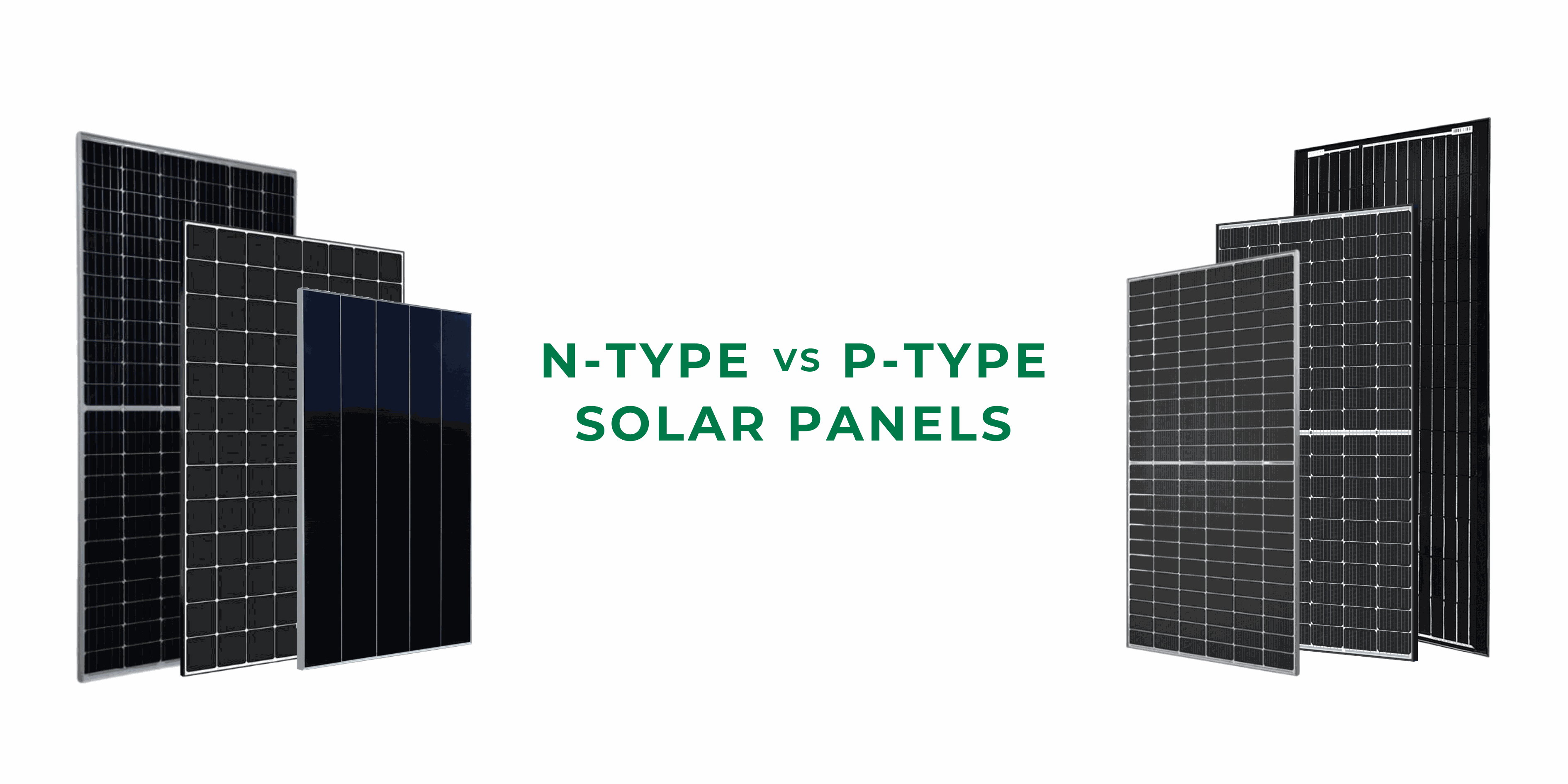
The difference between the two solar panel types comes down to the way the solar cells are made. This has an effect on the way they catch the sunlight and convert it to usable energy to power your application. The majority of solar panels use a conventional crystalline silicon (c-Si) solar cell. This cell consists of the silicon wafer which has been coated (or often referred to as having ‘been dosed’) with a variety of chemicals to stimulate power production.
The difference between the P-Type and the N-Type is simply which chemical forms the base of layer of the cell and which chemical forms the top layer. The P-Type solar cells are first dosed with a layer of boron to create the cell’s base layer. With boron having 1 less electron than silicon, this creates a positively charged base. It is then dosed with phosphorus to create the cell’s top layer. With phosphorus having 1 more electron than silicon, a negative charge is created as the cell’s top layer, and electricity in this cell will flow from top to bottom.
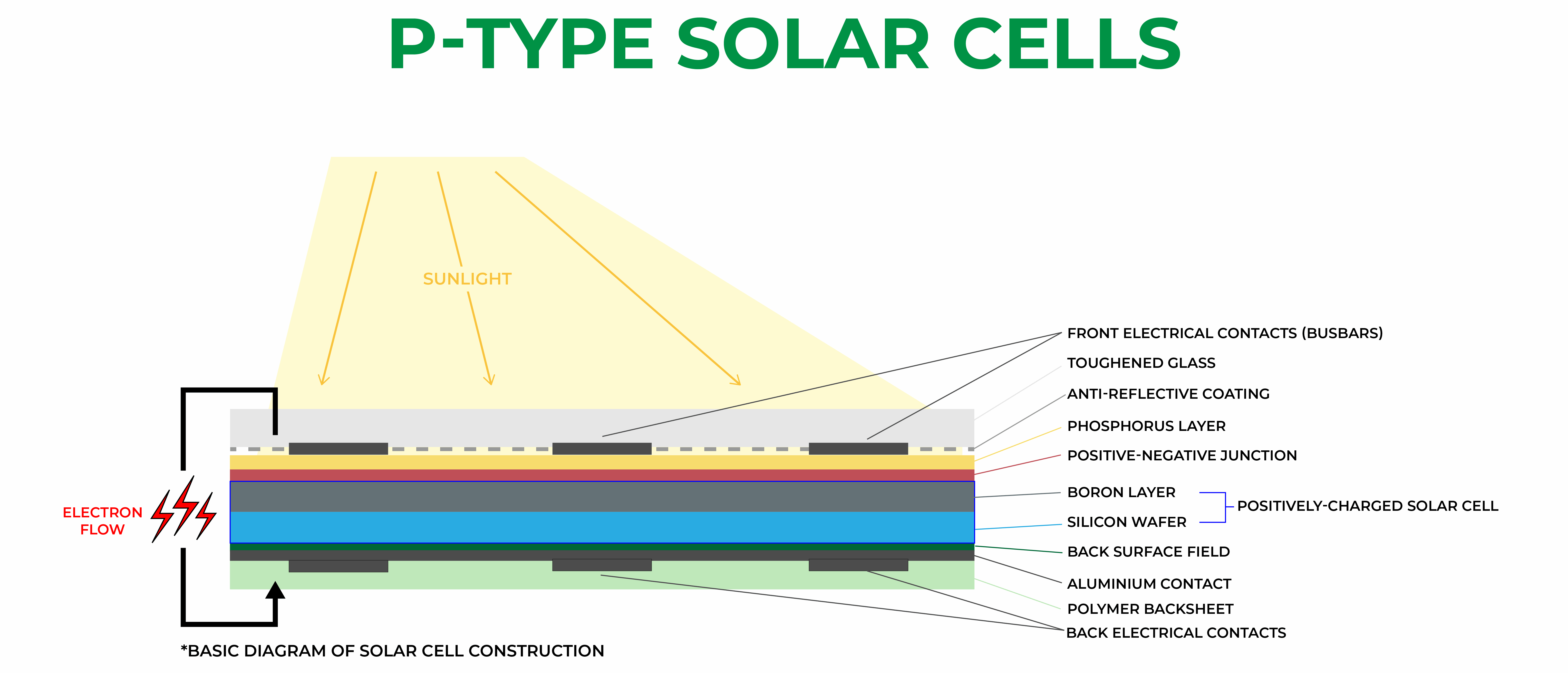
In opposition, N-Type solar cells are first dosed with a layer of phosphorus, and with phosphorus having 1 more electron than silicon, a negative charge is created as the cell’s base layer. It is then dosed with boron to create the cell’s top layer. With boron having 1 less electron than silicon, a positive charge is created as the cell’s top layer, and electricity in this cell will flow from the bottom to the top.
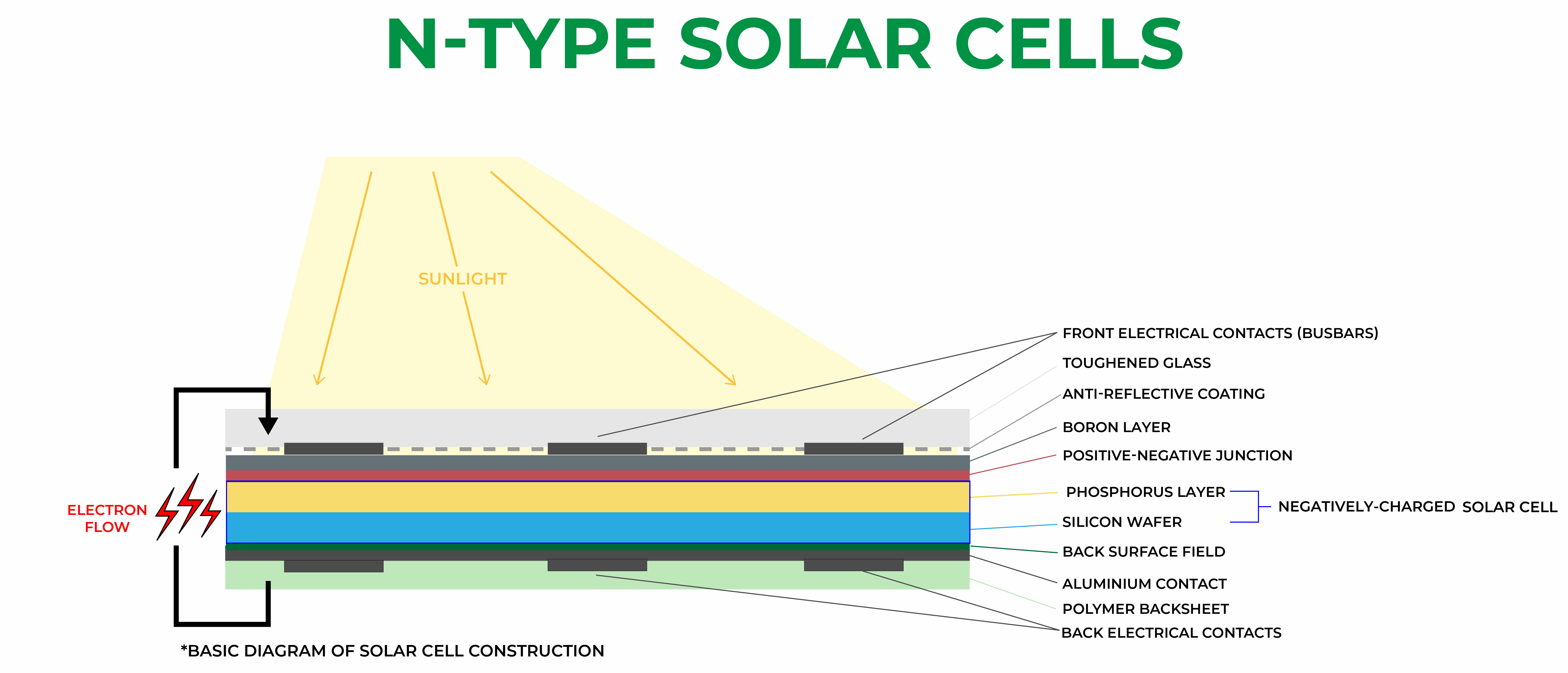
But what does it actually mean for the efficacy of each solar panel? Is one better than the other, and if so…why? First it is important to break down the pros and cons of both solar panel types.
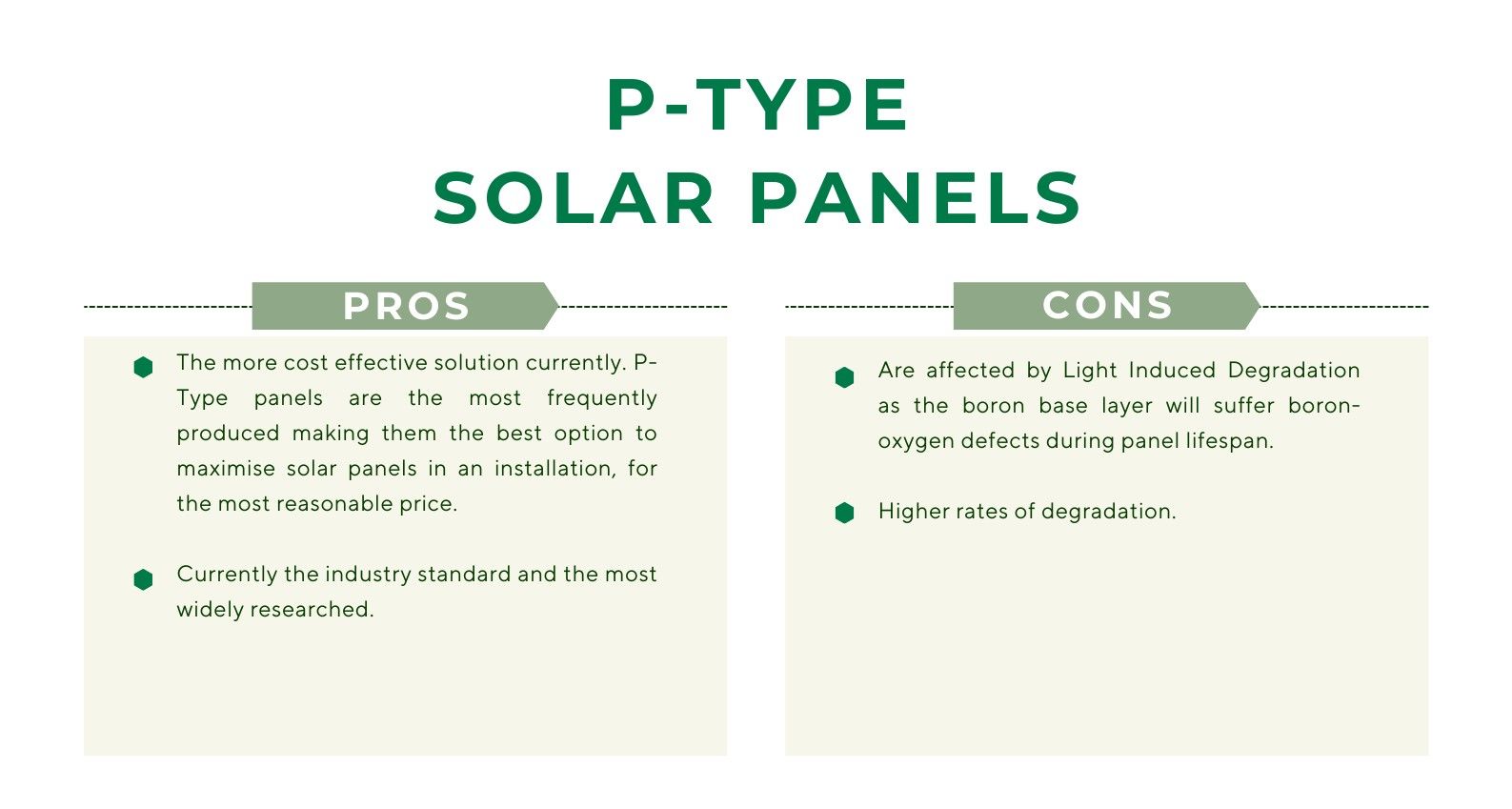
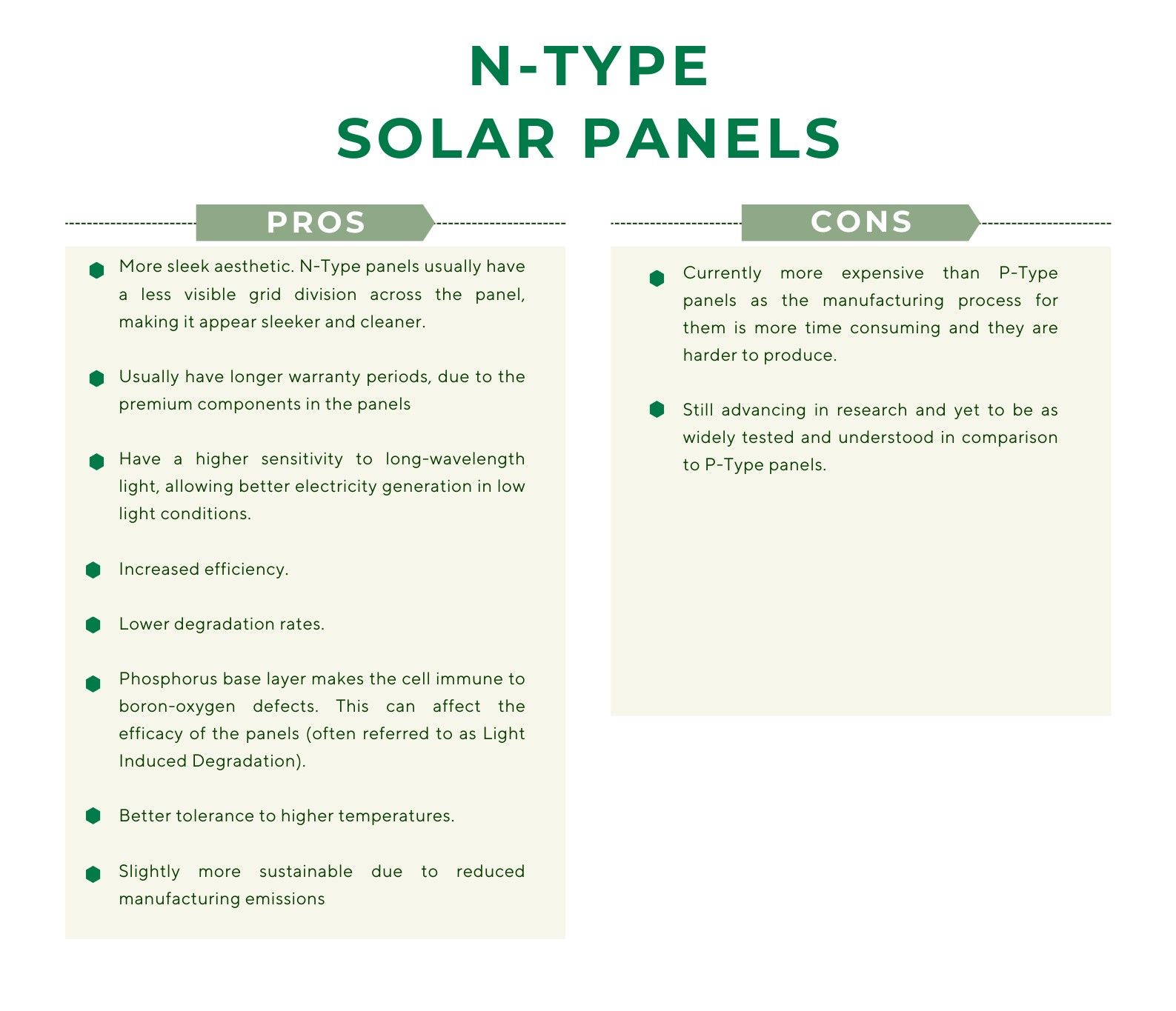
Factors to Consider When Choosing Between N-Type and P-Type Solar Panels
Although breaking down the pros and cons for the panel types can be an easy solution for determining a better solar panel design, it is also important to consider the location and environment the solar panels will be used in. This can be a main determining factor in choosing the best panel type for your investment.
Which solar panel type is going to be better suited to my specific application or environment?
For Example:
“I have a sea-side home just near Bribie Island and I want to put Solar Panels on my roof to offset my power usage”
N-Type solar panels usually have a better resistance to marine corrosion and externally caused degradation, and may be a more cost effective solution for this client in the long term.
For Example:
“I am a commercial business with a large building in an industrial zone outside the city. I would like to maximise my solar energy generated to minimise my carbon emissions”
For a building that resides in direct sun, and without exposure to excess heat or corrosives, the best solution for the client’s demands would be to maximise solar panels used on their roof. Because of the size of most industrial building this would require a large number of panels, making the less expensive but still highly capable P-Type panels the best solution.
However, if the client was not concerned about the price of the panels and wanted to have panels with the longest warranty, least amount of degradation and a higher energy yield across the lifetime of the system, than it would be better for them to invest in the N-Type solar panels.
How does the temperature of my environment affect N-Type and P-Type Solar Panels differently?
For Example:
“I want to decrease my carbon footprint by installing solar panels on my home. I live in north-west Western Australia, where it is regularly 35 degrees and above. My home gets extended direct sunlight and I have no large trees shading my roof”
For a home that gets extended direct sunlight in higher temperatures, it is worth considering N-Type panels for this application. Most N-Type panels are proving to have a lower temperature coefficient, which means that the panels are less affected by decreases in power output as the temperature increases.
How would N-Type Solar Panels and P-Type Solar Panels perform differently under low light conditions?
For Example:
“I want to move my home completely off grid to become fully self-sustainable. My home resides in the heart of the Sunshine Coast Hinterland and my property is surrounded with towering Eucalyptus trees”
With a home that is surrounded by large trees that would cast occasional shade on the roof, it would be beneficial for the client to consider N-Type panels for maximum solar generation. N-Type solar panels have a higher sensitivity to long-wavelength light. This allows them to still efficiently generate electricity in low-light conditions such as cloudy days, partially shaded zones or during sunrise and sunset.
Panel Quality and Longevity
In general, both N-type and P-type solar panels are designed to maintain a high level of performance over many years. Though as expected, both types of panels are subject to some level of degradation over time, through various factors such as sunlight exposure, environmental conditions, severe weather events and fluctuations in temperature.
N-Type solar panels, however, are said to be slightly longer lasting than P-Type panels. Studies suggest this is due to the lower rates of degradation of N-Type panels. Based on their differing cell structure, the N-Type cell is immune to the boron-oxygen defects and light induced degradation that affects P-Type cells. This allows the N-Type cells to have a more stable and consistent performance over the panel’s lifespan.
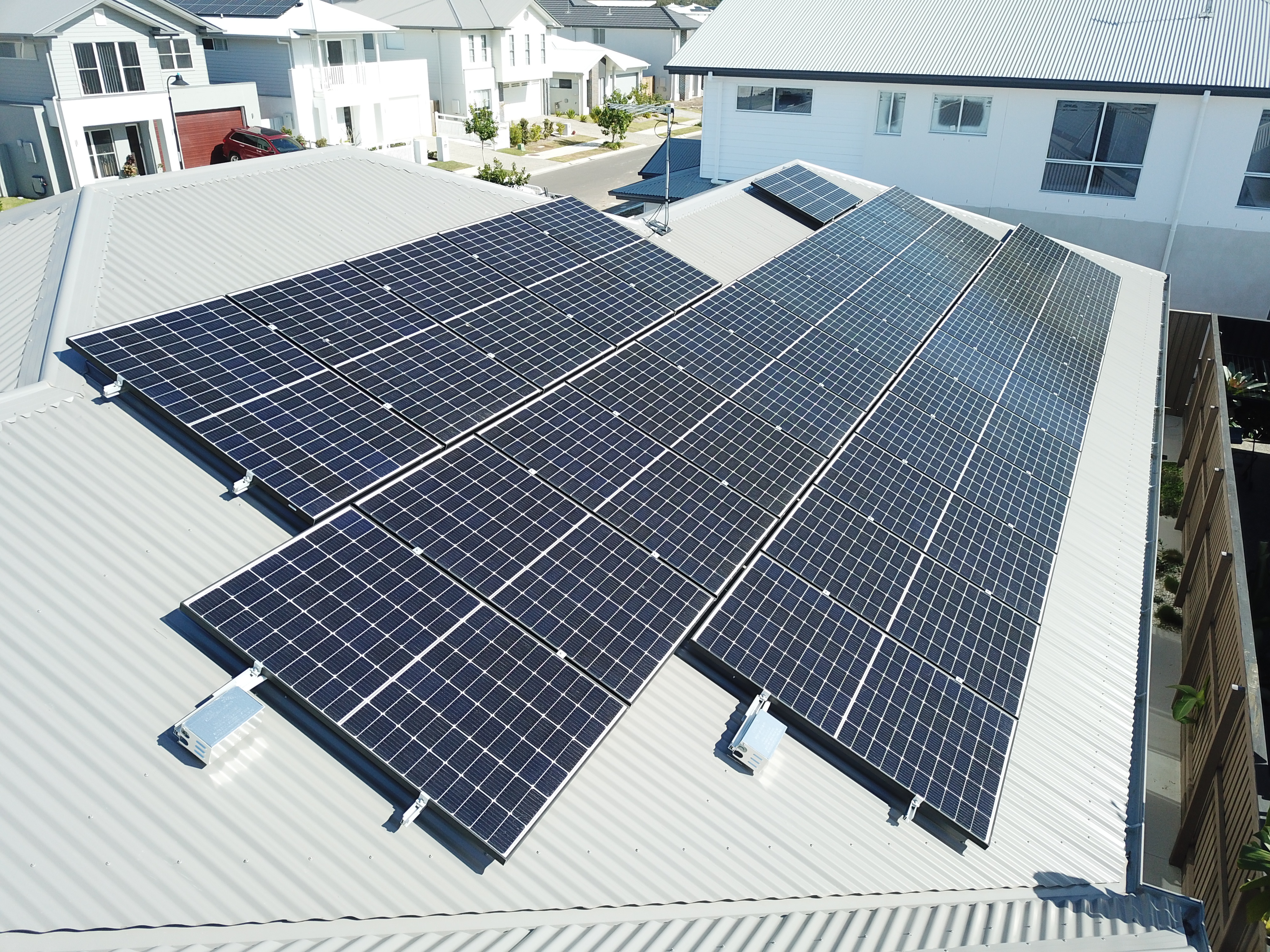
All solar panels are designed to have a long lifespan, typically between 25 and 30 years or more, although the exact lifespan of solar panels will depend on a variety of factors. Level of panel maintenance, conditions of their use and quality of the panel materials will all have an effect on the lifespan of the solar panels. Due to their decreased degradation rates, it is said that N-Type solar panels last longer than P-Type solar panels. That being said, with proper maintenance and a reputable installer who has provided quality solar panels, P-Type solar panels will not fall short of a long lifespan.
Although this is important to consider when deciding on your solar panel of choice, actual rates of degradation will vary between every person and property as every solar array (and their respective location, environment and application) is different.
Costs Comparison

Without a doubt there is a clear difference in the current cost of N-Type panels compared to P-Type panels. P-Type solar panels are cheaper than N-Type panels due to much higher production rates for P-Type panels, whereas N-Type panels are still very new to the residential/commercial solar market and cost more to make.
Since their introduction a couple of decades ago, P-Type solar modules have dominated the residential and commercial space in the solar energy market. This is due to their high-performing capabilities which were unachievable previously. At that time, solar technology was being solely developed for use in space, and therefore the demand was for panel cells that could withstand radiation and degradation rates present in a space environment.
The research during development proved P-Type solar panels to be more resistant to space radiation and long term degradation, and propelled P-Type panels into the forefront of the solar industry. With the new demand for solar technology, development of a cost effective process for solar panels was dedicated to the desired P-Type panels, leaving N-Type panels to wait for their time to shine.
Now as demand for the solar industry to provide higher-efficiency modules increases alongside the research and advancements in N-Type solar cell technology, it may soon be possible for N-Type panels to surpass P-Types as the industry standard.
Sustainability
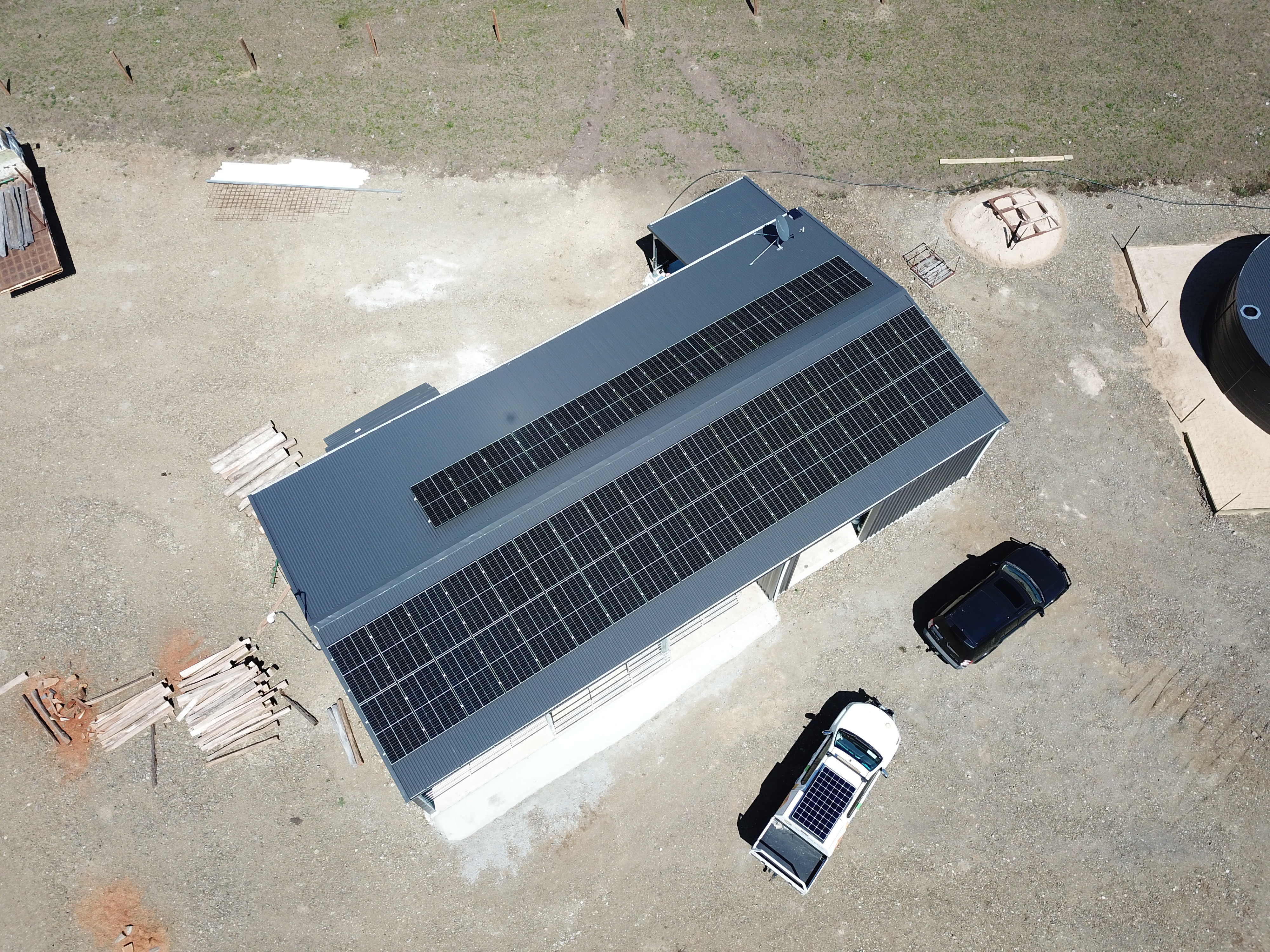
Both N-Type and P-Type solar panels are designed to be environmentally friendly and sustainable. The main purpose for solar panels is to generate electricity using a natural resource to avoid emitting greenhouse gases and other harmful gases and pollutants. Whether you choose N-Type or P-Type solar panels, the energy sustainability is second to none in comparison with fossil fuels and coal energy.
However when it comes to the complete sustainability of any product, the manufacturing and production process is where sustainable practices can come into question. As with any investment product, it is important to research the specific company you’re purchasing from. A lot of companies these days will give the illusion of sustainability (sometimes referred to as “green-washing” their brand), but their manufacturing processes are less than desirable.
Choosing a reputable manufacturer that is transparent about their sustainability commitment and production process will allow you to be making the most sustainable choice for your investment. After all, you don’t want to commit to the most efficient solar energy with the goal of maximum carbon emission reduction, only to find out the solar panels will take years to offset the CO2 emission created from their production.
So whether you choose N-Type or P-Type solar panels it is important to consider the company you’re purchasing from.
In Summary
When broken down, it is clear to see that not one panel type is particularly better than the other. Every person and property will have different environmental needs and solar energy goals, which makes the “best choice” between solar panels an individual and personal choice. In most cases it will probably come down to what falls within a certain budget, as N-Type panels will be a heavier upfront cost. Though, it’s not to say you’re missing out on benefits for choosing P-Type panels, there’s a reason they’ve been industry standard for so many years.
At the end of the day, both solar panel types are going to provide all the benefits of solar energy and breaking down your solar cell choice will mostly come down to where to allocate the funds you’ll need to provide to have solar energy.
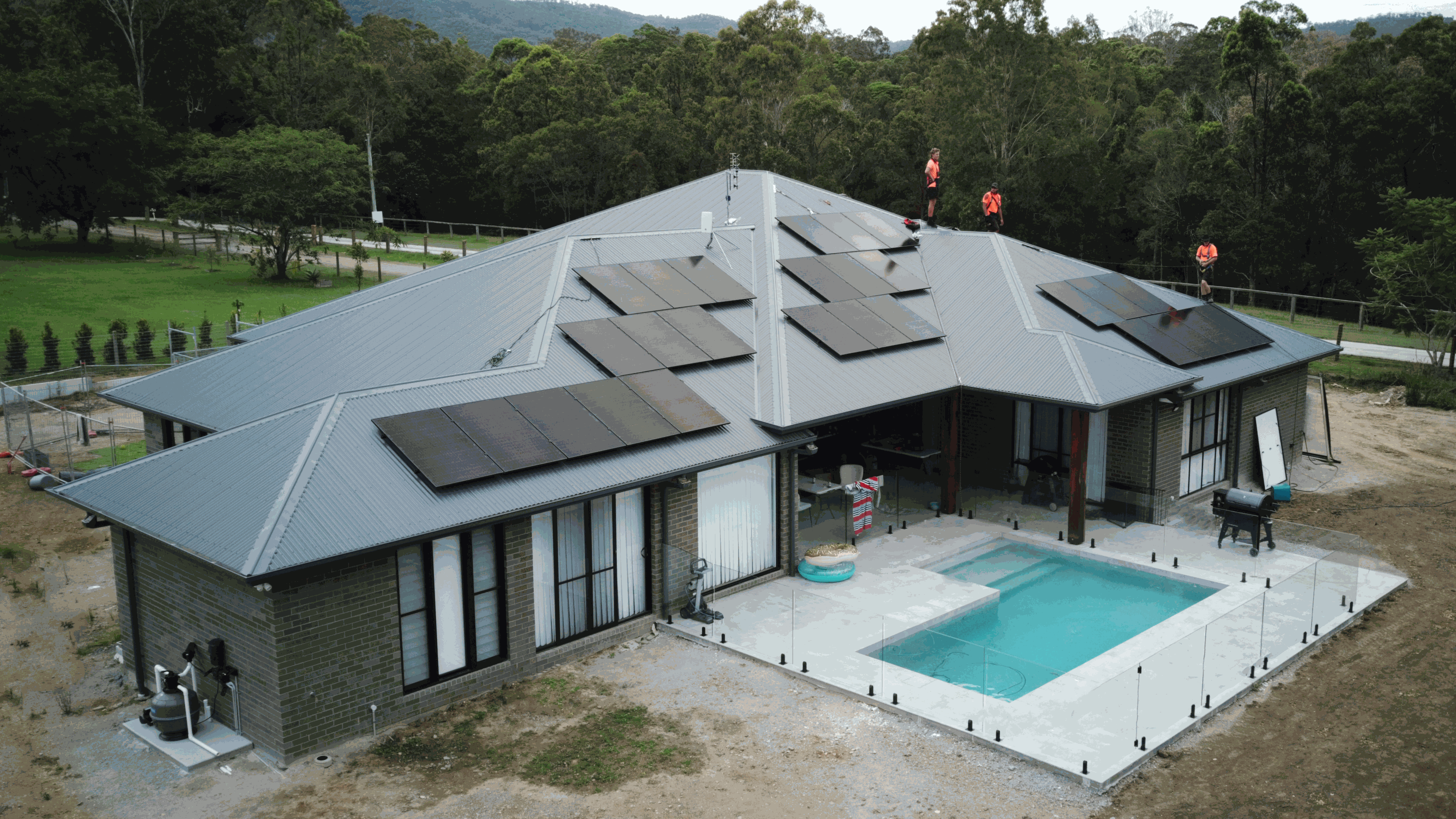
Solar Will Only Save You Money and Perform as Promised When Installed by a Reputable and Long-Standing Installer
Always choose a solar installer that has been trading for at least 10-15 years. A long-standing installer will be able to honour their warranties and service guarantees. A ‘solar orphan’ is someone whose installer has fallen out of business and thus has no points of contact for warranty claims or system support (unfortunately, this happens a lot more than you may think!).
Your solar installer should also complete a site inspection and analysis of your personal energy needs, to design a system that is most suited to your energy goals. On-site inspections are preferable, as this will help to avoid any hidden fees or additional costs that may be incurred come the day of installation (as pricing is always subject to inspection).
In summary, the most important things to look for when selecting an installer are evidence of customer testimonials focused on reliability and honesty, a high standard of workmanship, warranty periods, and quality components.

Springers Solar | Queensland's Most Experienced Solar Installer
Springers Solar provides quality components with proven performance, backed by industry-leading warranties, and dedicated after-sales support. Thousands of satisfied customers over more than 21 years of operation make Springers Solar one of the most established and experienced solar companies in Australia.
Springers Solar has received multiple awards for design and installation and is a certified/preferred installer for a large range of solar panel, inverter, and solar battery manufacturers, including Tesla, REC, and SolarEdge.
Our dedicated in-house team of electrical engineers, project managers, solar PV designers, solar installers and electricians work closely with you before, during, and long after your project is completed. Springers Solar offers an industry-leading 10-year workmanship warranty which is a testament to our qualified staff and offers you outstanding value and peace of mind.
N-Type Solar Panels VS. P-Type Solar Panels